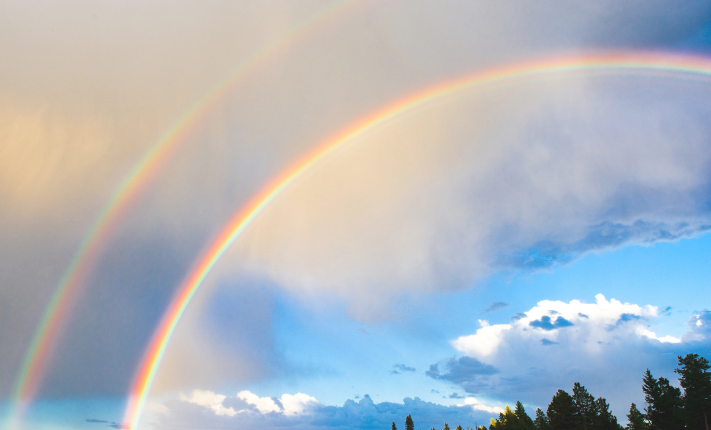
Rainbows are undoubtedly one of the most beautiful (and bright) anomalies of the weather world. They take a perfect combination of sunlight, the right atmosphere, and the right point of view to create and witness. Sunlight bends as it moves through the higher density water droplets, causing the light to split into the different colors we see when looking at a rainbow. But, in order to actually see a rainbow yourself, the sun must be behind you!
Rainbows throughout history
Scientists and philosophers have been asking questions about rainbows as early as 350 B.C. when Aristotle looked at a rainbow in the sky and asked, “Why is a rainbow a bow?” For centuries, scientists around the world have pieced together the mysteries behind the brilliant rainbows we still see in the sky today. In fact, Isaac Newton’s famous quote about “standing on the shoulders of giants” was about the phenomenon of rainbows, and the nature of white light and color separation inside rainbows.
What causes a double rainbow?
Similar to snowflakes and water droplets, not all rainbows are the same. Sometimes, for example, light can be reflected for a second time while inside a water droplet and produce a double rainbow. This second rainbow can be seen above the first, or primary, rainbow, and is also a reverse copy of the primary rainbow with colors mirroring the rainbow below, moving from red to violet when moving from the bottom of the rainbow to the top.
Creating Your Own Rainbow
MATERIALS:
- Glass jar or a large drinking glass
- Small mirror
- Flashlight
- Dark room with white walls
PROCESS:
- Fill the jar or glass with water.
- Place the mirror inside the water-filled jar or glass.
- Tilt the mirror slightly upward.
- In a very dark room with white walls, shine the flashlight onto the mirror.
A rainbow will appear! (Note: If no rainbow appears at first, just change the angle of the light from the flashlight or change the angle of the mirror.)
EXPLANATION:
The mirror reflects light that passes back through the water, traveling at an angle. The water bends or refracts, the light. As the light bends, it separates into the colors of the rainbow: Red, orange, yellow, green, blue, indigo and violet.